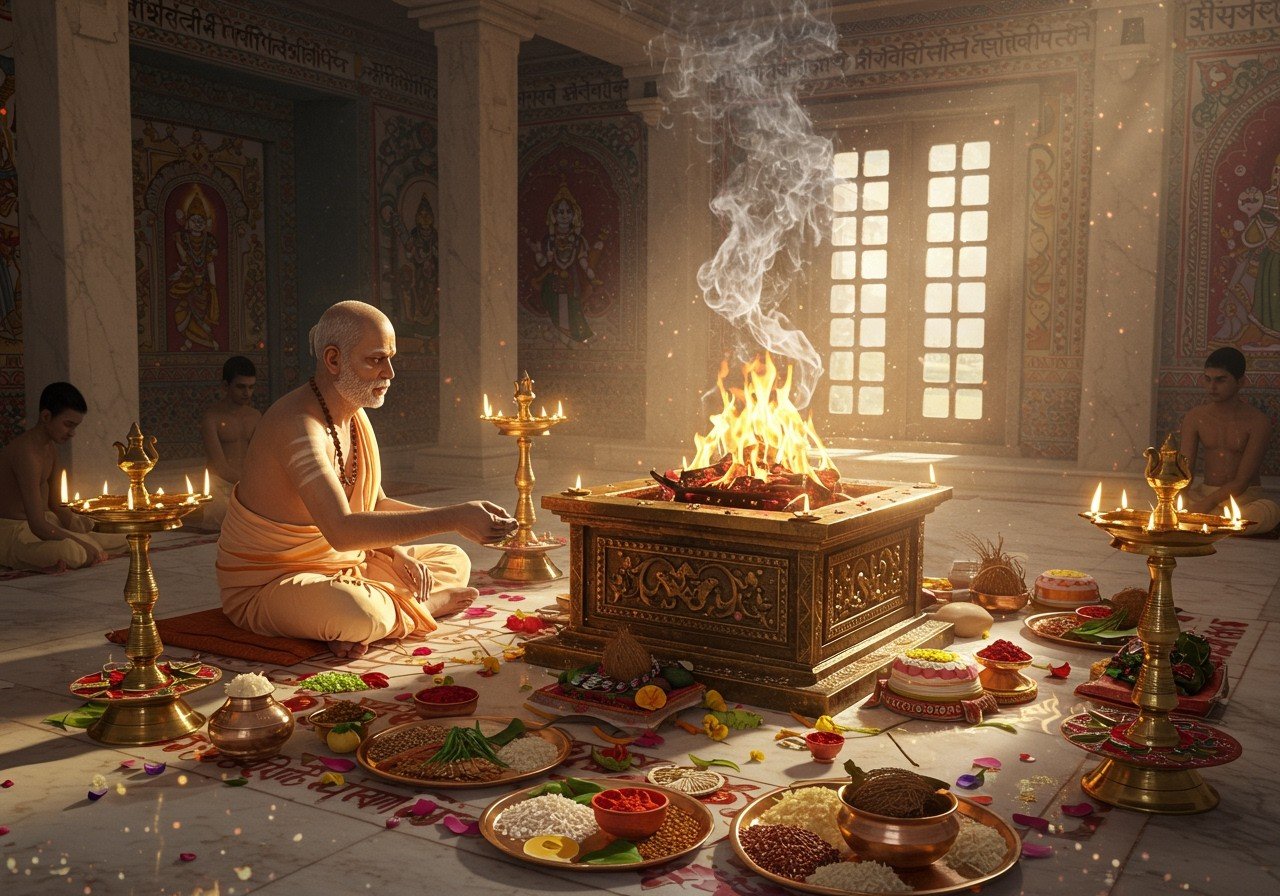
Vedic rituals and practices form an integral part of Indian culture, holding profound spiritual meaning. This guide explores these ancient traditions, focusing on key rituals like Agnihotra, Vedic mantra recitation, and the significance of Vedic chanting. We’ll delve into the history, meaning, and practices, offering insights for those who cherish tradition.
A Brief History of Vedic Rituals
Vedic rituals originate from the Vedas, ancient scriptures composed over 3,000 years ago. These scriptures are divided into four parts: Rigveda, Samaveda, Yajurveda, and Atharvaveda, each contributing uniquely to ritualistic practices.
- Rigveda: A collection of hymns and praises dedicated to various deities, forming the foundation of many Vedic rituals.
- Samaveda: Emphasizes melodies and chants, providing the musical framework for rituals and ceremonies.
- Yajurveda: Contains prose mantras and formulas crucial for the proper execution of Vedic rituals.
- Atharvaveda: Deals with spells, charms, and incantations, addressing practical aspects of life and spirituality.
Performed by ancient Indian priests (Brahmins), these rituals were central to daily life. Over time, while some aspects evolved, the core principles remained. The shift from oral tradition to written texts preserved these rituals. Today, Vedic rituals continue to influence contemporary Hindu practices and festivals.
The Agnihotra Ritual
Agnihotra, a core Vedic practice, involves offering oblations into a sacred fire at sunrise and sunset. This ritual is believed to purify the surroundings and enhance well-being.
Essential Components of Agnihotra:
- Preparation: Setting up the fire altar, a crucial first step in the Agnihotra ritual, ensuring a sacred space for the ceremony.
- Offerings: Rice, ghee, and other natural substances are offered into the fire, symbolizing gratitude and purification.
Agnihotra is associated with numerous benefits, including improved mental and physical health. Scientific studies suggest positive environmental effects. To perform Agnihotra at home, you’ll need a copper or brass fire altar, cow dung cakes, ghee, and rice grains.
Vedic Mantras: Sounds of Power
Vedic mantras are potent hymns with immense spiritual significance. They invoke divine energies and are central to many rituals.
Types of Vedic Mantras:
- Gayatri Mantra: A revered mantra for wisdom, enlightenment, and spiritual awakening.
- Maha Mrityunjaya Mantra: A powerful mantra for protection, healing, and overcoming challenges.
Accurate pronunciation and intonation are vital for maximizing the benefits of Vedic mantras, which include mental clarity and spiritual growth.
The Importance of Vedic Chanting
Vedic chanting, the precise recitation of hymns from the Vedas, is integral to Vedic rituals. It preserves cultural heritage, connecting us to ancestral wisdom.
Techniques for Vedic Chanting:
- Breath Control: Regulates the flow of energy, enhancing the resonance and impact of the chants.
- Rhythm: Ensures correct timing and flow, creating a harmonious and meditative experience.
- Pronunciation: Maintaining the integrity of the mantra is crucial for its effectiveness and spiritual potency.
Chanting offers benefits like improved concentration, stress reduction, and a deeper spiritual connection. Research indicates positive effects on the brain and body, reducing stress and increasing mindfulness. Trained Vedic priests often lead chants in community rituals, preserving the tradition and teaching proper techniques. Online classes and practice groups are available for those interested in learning.
Modern Relevance and Practice of Vedic Rituals
Vedic rituals remain relevant today, offering spiritual fulfillment and a sense of connection to our roots. Integrating these practices into modern life is possible while maintaining authenticity.
As of February 20, 2025, Vedic rituals carry deep symbolism and significance, often involving offerings, prayers, and sacrifices derived from the Vedas. Key rituals such as Agni Hotra symbolize purification and gratitude to the fire god, Agni. These rituals maintain cosmic balance and prosperity, with each element reflecting interconnectedness and spiritual devotion. The Rigveda and other Vedas provide essential hymns and mantras for ceremonies, underscoring their importance in spiritual practices and cultural events.
Authentic Ritual Items:
- Online Accessibility: Convenient online access to authentic items simplifies the practice of Vedic rituals.
- Ensuring Correctness: Authentic items ensure rituals are performed with accuracy and respect for tradition.
Younger generations are increasingly interested in Vedic practices, seeking spiritual growth and understanding. Community events and workshops promote education, while technology, like apps and online platforms, spreads knowledge. Testimonials from those incorporating Vedic rituals into their lives highlight the positive impacts of peace, balance, and deeper spiritual connection.
Poojn.in: Your Partner in Vedic Practices
Poojn.in, India’s largest cultural goods and services store, provides a wide range of authentic products for Vedic rituals. Explore our collection of cotton wicks, fountain pen ink, and Laddu Gopal murtis to enhance your Vedic practices. We offer high-quality, genuine products to support your spiritual journey. Visit poojn.in today!
For further exploration of Vedic wisdom and related practices, consider these resources:
- Vedas: Ancient Wisdom for Modern Life – Practical Applications
- Yoga & Ayurveda: A Holistic Wellbeing Approach
- Mantra Chanting: Sound Vibration & Healing Power
Embrace the wisdom of the Vedas and experience the peace, balance, and spiritual connection they offer.


